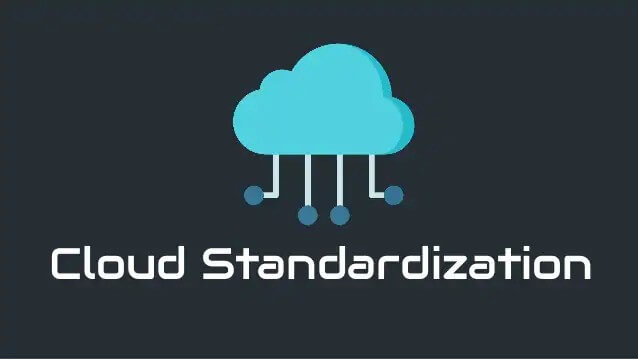Cloud computing has a lot of advantages, but they don’t emerge overnight. To achieve maximum value, the cloud needs a well-defined, value-oriented strategy and coordinated execution by IT and businesses. Organizations that just “lift and shift” programs to the cloud make no architectural changes. For example, lose out on important advantages like auto-scaling and automatic performance monitoring. Success causes a cloud-ready business-technology operating model centred on a product life cycle, which boosts developer productivity and speeds up product creation.
When it comes to cloud adoption, businesses with a high level of maturity have different approaches than their counterparts. Companies with higher cloud maturity share many characteristics, according to research on public cloud users:
They are early adopters of cutting-edge technology, aggressively innovative, and see technology as a competitive differentiator and key enabler for launching and building new businesses. These companies acquire significant cloud expertise by being the first to migrate, and they outperform their counterparts in terms of cloud results.
Capabilities development produces measurable outcomes. Highly developed cloud businesses strive for excellence in knowledge and skill sets, resulting in a staff that is cloud-savvy.
These businesses offer paths for job and career development for cloud specialists, as well as customized learning programs to acquire cloud-specific skills and competencies, to build capabilities within the workforce. They also make sure that all employees get on-the-job cloud training.
4 Key Steps for successful cloud adoption
Developing a portfolio of use cases is one of the most frequent errors businesses make when adopting the cloud. These use cases may provide some advantages on their own, but they lack the scale to provide the full potential value. The top businesses, in our view, take four steps to provide a clear route to cloud-driven performance gains.
As cloud use becomes more prevalent, we expect this value distribution to shift. Computational power and infrastructural democratization may completely alter the environment for businesses that were previously unprofitable. Compared to other previous disruptive technologies.
The cloud shifts barriers to entry in multiple industries from scale to skill, making it possible for smaller, more nimble companies to scale businesses with the latest infrastructure without having to worry about upfront costs. This threatens more established players, whose slower growth rates can be hurt by cloud innovation.
Businesses should carefully evaluate the many sources of value, such as people, to choose where they should devote their attention, financial resources, and other resources.

1. Set the bar high
Many business executives understand that cloud technology frees them from the constraints of conventional systems, but many are still trapped in outmoded ideas of what they can accomplish and have set the bar too low. Business and IT executives must clearly and urgently define a high-value goal that can be achieved when they collaborate closely on the cloud.

2. Build Business Case based ROI
A comprehensive knowledge of cloud economics spanning cost reductions and business acceleration should be the foundation of any cloud business case. It should be tailored to the risks of transformation and prioritized by the business domain, as well as contain the necessary resource allocations and task sequencing.
Analyzing and explaining the value that may be unlocked or expedited by the cloud is one successful method for building business innovation cases. For example, a business-innovation argument for an insurer that can update its analytical underwriting models twice as quickly on public cloud as on conventional, on-premise infrastructure should include both the improved return on investment and the benefit of freeing up capacity for more innovation.
Although the specifics may differ per company, we’ve found that a comprehensive, data-driven business case can assist businesses to achieve agreement across departments and generate organizational momentum in order to meet goals in two years.

3. Agile Adoption
Companies must have genuine competence to utilize the cloud: executives, employees, and partners with extensive experience in cloud and cloud transformations; skilled practitioners; and a wide ecosystem. Furthermore, effective cloud initiatives are only feasible when businesses change their processes.
Building a strategy, for example, involves small cross-functional teams working inside a well-defined architecture to produce business cases, rather than applications in fast iteration cycles, rules that integrate security into development, and end-to-end process automation.

4. Invest In Standardization
Invest in the development of a standardized, automated cloud platform that boosts productivity and provides a fantastic self-service experience for developers, who are among the most frequent cloud users.
Developers may utilize automated, API-based services to safely and reliably deploy workloads on cloud platforms. A greater degree of automation also cuts down on the time it takes to develop new company concepts, allowing companies to innovate and expand more quickly.
The COVID-19-induced digital acceleration is likely to go long beyond the COVID crisis, and businesses must be ready to react and adapt quickly. The cloud can help businesses not only move quicker and save money on IT but also promote innovation and the integration of powerful, disruptive, and emergent technologies.
Companies, on the other hand, can only win a piece of this tremendous value pool if they establish a clear understanding of the value at risk and the business cases that must be prioritized.
We can help your organization in the cloud adoption journey with our excellence in developing efficient cloud infrastructure with the help of our highly trained professionals, Oracle Cloud Infrastructure, and Oracle Applications customized according to your business needs. For more information on how we help organizations in digital transformation through Oracle Cloud contact us today.
Recent Posts
- Oracle ERP and Data Migration Services for Organizations Moving to and From Oracle ERP
- Empowering Application Development with Oracle APEX: A Comprehensive Guide
- Wireless Mesh Networks: Empowering Industrial IoT Applications
- Intelloger and Quantum Phinance Forge Strategic Partnership to Empower Businesses with Streamlined Financial Operations
- Extending UI Integration for Additional Business Objects in Oracle Fusion Applications




